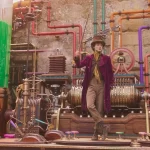Sundance 2021: All Light, Everywhere, by David Bax

In his new documentary, All Light, Everywhere, director Theo Anthony (Rat Film) invokes an old adage that, “The eye sees only what it looks for and it looks only for that which it has been taught to expect.” It’s a frighteningly concise and almost surely true refutation of what we reflexively expect about our own senses, that they are telling us the truth. But Anthony appears (or does he?) to argue that if we can’t trust our own eyes, we certainly can’t trust the mechanical ones we’ve developed to do the watching for us.
Starting with a very basic description of how the human eye works, All Light, Everywhere quickly shifts its focus to our history and future of using cameras to gather data. Against a backdrop of Dan Deacon-sounding music composed by Dan Deacon, Anthony shows a particular interest in cameras used for surveillance and reconnaissance.
Anthony wastes no time setting up his premise, the unreliability of what we see; this is the theme on which the rest of All Light, Everywhere will riff. He immediately reminds us that, at the very center of our eyes–the tools we use to confirm the veracity of our experiences in what we think of as the real world–there is a blind spot that our brain fills in. Having thus imbalanced the foundation of our relationship to what we see, it becomes easy for Anthony to topple false axioms that the camera doesn’t lie or that imagery is a universal language. It becomes unnerving, then, to think about the use of security cameras and the like in our legal and justice systems as what one subject describes as “unbiased witnesses.”
Of course, the irony here is that All Light, Everywhere is itself a visual experience. Anthony has a bit of fun with this. Even the Steadicam shots bounce gently up and down, a constant reminder of the human operator behind the lens. And certain bits of what would be narration in a more standard documentary are left only as subtitles, requiring us to read instead of listening, focusing our visual attention on just the bottom third of the screen.
All Light, Everywhere‘s chief area of interest, taking up the majority of its screen time, is the use of body-worn cameras by American police forces. Advocates for increased police accountability and scrutiny (like myself) tend to think of these cameras as a good for the community; after all, as we hear someone says, “Cameras don’t take sides.” But, when sitting in on a training session in the Baltimore Police Department, we see these cameras framed, persuasively so, as more helpful to the police than to the public. As Anthony repeatedly reminds us, the operator (or wearer, in this case) is a part of the camera; we only see what they are able to show us, or what they choose to. Throughout All Light, Everywhere, we returns to things like pigeons with cameras strapped to them being used for war reconnaissance or the “photographic rifle,” a camera that looks exactly like that name would suggest. These images are surreal and funny but they also drive home Anthony’s view that cameras aren’t just tools, they’re weapons.



























